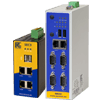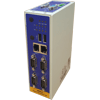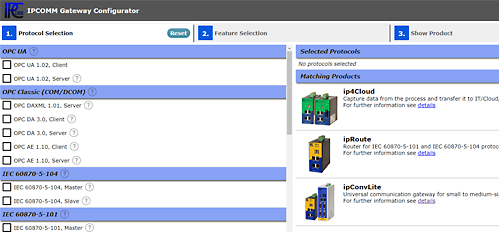Indactic 2033
ISO/OSI Model
| 7 | Application Layer | Indactic 2033 Application Layer |
| 6 | Presentation Layer | n/a |
| 5 | Session Layer | n/a |
| 4 | Transport Layer | n/a |
| 3 | Network Layer | n/a |
| 2 | Link Layer | n/a |
| 1 | Physical Layer | RS232 / V.24 (PCM) |
Supported Information Types
Control Direction
- Single Command
- Double Command
- Setpoint [8 bit]
Monitoring Direction
- Single indication [1 Bit]
- Single indication [1 Bit] with time tag
- Measured value [8 bit]
- Measured value [12 bit]
- Counter value BCD [6 digits]
- Counter value [24 bit]
Protocol Features
Physical Layer
PCM
pseudo halfduplex
halfduplex
baud rates: 50, 100, 200, 600, 1200Application Layer
on-demand transmission of static signals such as single indications and analogs
spontaneous transmission of single indications with time tag
direct command transmission (without SBO)
clock synchronizationAddress Space
up to 15 RTUs connected to one line by "base addressing" and up to 4095 RTUs by "extended addressing"
single indications: up to 15 files with 128 points each
analogs: up to 8 files with 16 points each
counter values: up to 4 files with 16 points each
commands: up to 15 files with 128 points each
(per RTU)
Available Protocol Stacks
Applicable Products
References








